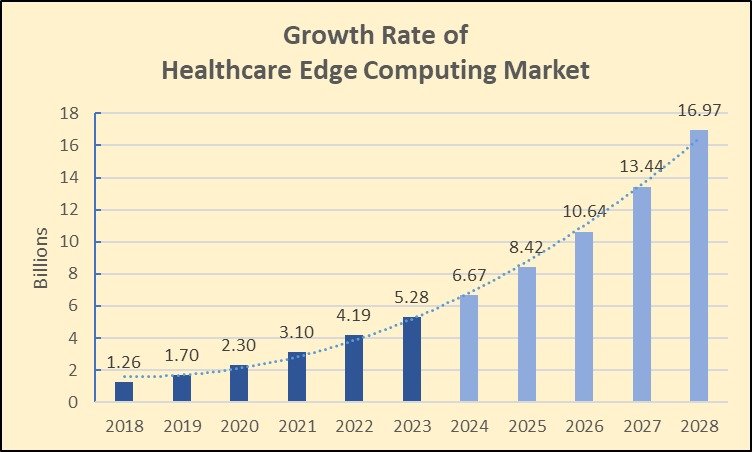7 Reasons Why Edge Computing is the Future of Robotics
7 Reasons Why Edge Computing is the Future of Robotics
Beyond the Cloud: NLP's New Frontier in Edge Computing
By Carl DeSalvo Date Published: February 15, 2023 7 min read
Introduction
At the forefront of technological evolution, robotics is undergoing a transformation that is reshaping its very core. The catalyst of this change? Edge computing. As we delve into the intricate dance of robotics and edge computing, we unravel how this synergy is enhancing and revolutionizing robotic technology. In this exploration, "7 Reasons Why Edge Computing is the Future of Robotics," we will navigate through the groundbreaking benefits that edge computing brings to robotics, heralding a new era of speed, security, efficiency, and beyond. Join us as we embark on this journey to uncover the future, where robotics and edge computing converge to create a world of unprecedented possibilities.
1. Unleashing Real-Time Decision Making in Robotics
The dynamic world of robotics demands instant decision-making, and edge computing is the key to unlocking this potential. By bringing data processing closer to the source, edge computing dramatically reduces latency, allowing robots to respond to their environment in real time. Imagine a scenario where robotic sensors are directly integrated with edge computing modules, enabling them to process data faster and more efficiently. This shift is crucial, especially in applications where every millisecond counts, like autonomous driving or precision manufacturing. It’s important to avoid the common pitfall of relying solely on cloud computing for real-time processing, where inherent latency issues can be a major hindrance in scenarios that require split-second responses. Take, for instance, the breakthroughs achieved by Boston Dynamics. Their robots, once tethered to the slower responses of cloud computing, now navigate and interact with their environment in real-time, showcasing a dramatic improvement in performance.
2. Cutting Costs with Efficient Data Management
Managing data efficiently is crucial for cost-effective operations in an age where data is king. Edge computing emerges as a financial savior by processing data locally, thus significantly cutting down on the bandwidth and storage costs associated with cloud computing. This local processing means that only essential data is sent to the cloud, reducing the burden on network resources. This translates to substantial savings for businesses, especially those relying heavily on robotics. A common oversight in this area is underestimating the costs associated with continuous data transmission to the cloud. Organizations can achieve greater financial efficiency by optimizing data processing algorithms and minimizing unnecessary data transmission. The impact of this approach is evident in sectors like manufacturing and hospitality. In smart factories, for instance, robots equipped with edge computing capabilities have drastically reduced operational costs and enhanced overall efficiency.
3. Securing the Robotic Frontier
In our increasingly connected world, security is a paramount concern, particularly regarding robotics handling sensitive data. Edge computing addresses this challenge by decentralizing data processing, thus enhancing security and privacy. The risk of breaches associated with central data storage is significantly reduced by processing data locally. This decentralized approach is not just about protecting data; it's about building trust in robotic technologies. However, one must not overlook the vulnerabilities that come with centralized cloud storage. Embracing decentralized systems in robotics can lead to a marked reduction in data breaches, as evidenced by the enhanced security in sectors like healthcare and security. Robots in these sectors handle highly sensitive information, and the implementation of edge computing has been instrumental in safeguarding this data.
These markets are growing rapidly; the chart below demonstrates this for the healthcare edge computing market. Similar growth rates can be found in other edge computing markets as well.
7 Reasons Why Edge Computing is the Future of Robotics
Data sources:
Growth Rate of Healthcare Edge Computing Market (2018-2020): This information about the average yearly growth rate of around 35% during 2018-2020 was obtained from a report on Digital Journal. Digital Journal Article.
Market Size in 2022 and Expected CAGR: The market size of USD 4.19 billion in 2022 and the expected compound annual growth rate (CAGR) of 26.3% was cited from a report on Polaris Market Research. Polaris Market Research Report.
Market Size in 2023: The estimated market size of USD 5.28 billion in 2023 was also taken from the Polaris Market Research report. Polaris Market Research Report.
4. Scalability: The Backbone of Robotic Evolution
The need for scalable and flexible solutions becomes increasingly evident as the robotics industry continues to grow and evolve. Edge computing, with its modular nature, offers the adaptability and scalability required in this fast-paced domain. This flexibility allows robotic systems to easily adjust to varying computational needs, making them suitable for a wide range of applications. The key here is to implement modular edge computing components that can be scaled and adapted without major overhauls. However, the mistake many make is ignoring the need for systems that can dynamically adjust to different computational requirements. The benefits of this scalability are visible in industries like retail and manufacturing, where robots must adapt to varying operational demands.
5. Energy Efficiency: A Step Towards Sustainable Robotics
In a world grappling with environmental concerns, energy efficiency in technology is more important than ever. Edge computing offers a solution by reducing the energy demand of data centers. Organizations can significantly reduce energy consumption by implementing low-power edge computing devices in robotic systems, leading to cost savings and reduced environmental impact. It's essential to move away from traditional, centralized computing methods that are energy-intensive and embrace more sustainable practices. The positive impact of this shift is evident in applications like environmental monitoring and warehouse logistics, where energy-efficient robots are not just an operational choice but a commitment to sustainability.
6. Enhancing AI Capabilities in Robotics
Edge computing is revolutionizing the way robots learn and adapt. Enhancing machine learning capabilities allows robots to perform more complex tasks with greater accuracy. This advancement is particularly evident in AI-driven customer service robots, which have remarkably improved user interactions and problem-solving abilities. The key to harnessing the full potential of AI in robotics lies in leveraging edge computing for on-device training of machine learning models. However, underestimating AI-driven robots' computational needs and potential can be a major misstep. The enhanced processing efficiency that edge AI brings is a game-changer, especially in precision-demanding fields like robotic surgery.
7. Customization: The Key to Industry-specific Robotic Solutions
In robotics, one size does not fit all. Different industries have different requirements, and edge computing facilitates the customization needed to meet these specific needs. By developing edge computing modules that are customizable to the unique demands of different industries, organizations can ensure that their robotic solutions are both effective and efficient. This approach is crucial in industries like agriculture and underwater exploration, where the environmental challenges and operational requirements vary significantly. This is why applying generic computing solutions across diverse robotic applications can lead to inefficiencies. Custom edge computing solutions can dramatically improve operational efficiency, tailoring robotic capabilities to each industry's unique challenges.
Embracing the Future of Robotics with Edge Computing
Integrating edge computing into robotics is not just a technological advancement; it's a paradigm shift. This fusion paves the way for robots that are not only more efficient and capable but also more adaptable and secure. From real-time data processing to customized solutions, edge computing is setting the stage for the next generation of robotics. As we stand on the brink of this technological revolution, it's clear that the future of robotics will be defined by its synergy with edge computing. The time to embrace this future is now, and the possibilities are limitless.
End
I hope you enjoyed this topic. If you have a suggestion for a new topic you would like me to include in a future issue, please Click Here to submit your request.
All suggestions are appreciated. Thank you.
Author’s Bio
Carl DeSalvo, an alumnus of the University of Illinois with a Bachelor of Science in Electrical Engineering (BSEE), has established a distinguished career in the Electronic Design Automation (EDA) industry. His professional journey includes significant roles at renowned firms such as Cadence Design Systems, Synopsys Inc., and Mentor Graphics, as-well-as pivotal contributions to various emerging startups. Carl's expertise expanded globally during a three-year tenure in Europe, where he played a crucial role at Cadence Design Systems, supporting backend ASIC design for some of the region's largest electronics corporations.
On returning to the United States, Carl seamlessly transitioned into Sales and Marketing, demonstrating his versatility and business acumen. This phase of his career culminated in the founding of EDATechForce, LLC, a sales representative firm that, over a decade, partnered with more than 20 companies, benefiting from Carl's leadership and sales strategies.
Currently, Carl is the Vice President of Business Development and Sales at PIMIC, Inc., an AI startup at the forefront of designing innovative silicon solutions for efficient neural network architectures. His extensive experience and dynamic approach continue to drive growth and technological advancements in the AI industry.


